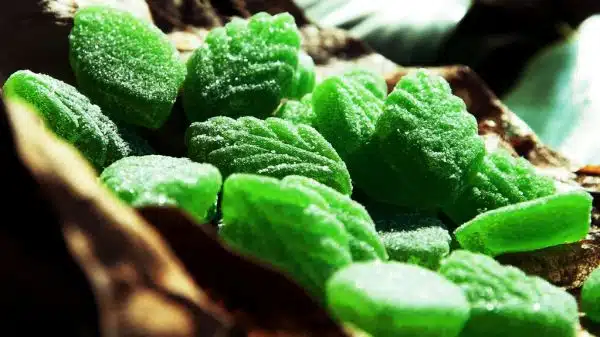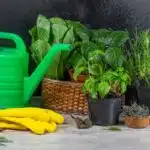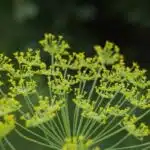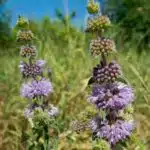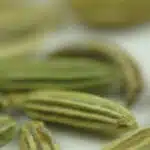Spearmint (Mentha spicata) is a popular herb that belongs to the family Lamiaceae, also known as the mint family. It is an easy-to-grow perennial plant that produces fragrant leaves and flowers, making it a favorite among gardeners and herbalists alike. Spearmint is commonly used for culinary purposes, such as flavoring teas, desserts, and savory dishes. However, it also has medicinal properties that make it a valuable addition to any home garden.
In this article, we will provide a comprehensive guide on how to care for and grow spearmint plants effectively. We will explore the optimal growing conditions required to ensure healthy growth of this plant, including soil type and pH level, watering frequency and amount, sunlight exposure requirements, and fertilization techniques. Additionally, we will discuss common pests and diseases that can affect spearmint plants, along with their prevention and treatment methods. By the end of this article, readers will have a thorough understanding of how to cultivate healthy spearmint plants for both culinary and medicinal use.
The Benefits Of Growing Spearmint
Spearmint, scientifically known as Mentha spicata, is a versatile herb that belongs to the mint family. One of the primary benefits of growing spearmint is its potential health benefits. The herb contains essential oils, including menthol, which may aid in digestion and relieve symptoms such as bloating and gas. Additionally, the leaves are rich in antioxidants, which have been linked to reducing inflammation and may help prevent chronic diseases.
Another advantage of growing spearmint is its aromatic properties for aromatherapy. The plant’s fragrant leaves release a refreshing scent when crushed or brewed into tea. Its aroma has been shown to help reduce stress levels and promote relaxation. Moreover, it can be used as an insect repellent due to its strong scent.
In conclusion, cultivating spearmint offers numerous benefits that make it an excellent addition to any garden or indoor space. From improving digestive health to providing aromatherapy benefits, this herb has plenty to offer. In the subsequent section, we will discuss the crucial steps in choosing the right location for your spearmint plant to ensure optimal growth and health.
Choosing The Right Location For Your Spearmint Plant
Spearmint is a versatile plant that can be grown in various locations. However, it thrives best in areas with full sunlight exposure. Therefore, when selecting the right location for your spearmint plant, you need to consider its sunlight requirements. This herb requires at least six hours of direct sunlight daily to grow optimally.
If you do not have an outdoor garden or enough space for a traditional garden bed, container gardening is an excellent option for growing spearmint. With container gardening, you have more control over the amount of sunlight and water your plants receive. You can place your containers in areas with plenty of sunlight and move them around if necessary to find the ideal spot for their growth.
In summary, choosing the right location for your spearmint plant involves considering its sunlight requirements and available space. If you are limited on space or do not have an outdoor garden, container gardening is a viable option. It allows you to grow your herbs indoors or outdoors while providing flexibility in terms of positioning and caring for them. In the next section, we will delve into understanding soil requirements for spearmint to ensure optimal growth conditions for this herb.
Understanding Soil Requirements For Spearmint
To successfully grow spearmint, it is important to understand its soil requirements. Spearmint prefers a slightly acidic soil with a pH range of 6.5 to 7.0. Soil that is too alkaline can hinder its growth and development. It is essential to test the soil pH level before planting, as this will determine the necessary amendments required for optimal growth.
Drainage is also an important consideration when growing spearmint. The plant requires well-draining soil to prevent waterlogging and root rot. If the soil does not drain well, it may be necessary to amend it with organic matter such as compost or peat moss. These amendments help improve drainage by increasing the soil’s ability to hold moisture without becoming waterlogged.
In addition to organic matter, other types of soil amendments can be beneficial for spearmint growth. Adding perlite or vermiculite can improve both drainage and aeration in the soil, creating a better environment for root development. Fertilizers such as bone meal or fish emulsion can also provide essential nutrients for healthy growth and development. By understanding these soil requirements and making necessary amendments, gardeners can ensure healthy spearmint plants that produce abundant leaves for culinary use.
As we have discussed, understanding the correct soil requirements is crucial for successful spearmint cultivation. In the next section, we will delve into how to plant spearmint seeds or cuttings effectively, so you can enjoy fresh mint leaves all year round without any hassle!
How To Plant Spearmint Seeds Or Cuttings
Now that we have a clear understanding of the soil requirements for spearmint, it’s time to delve into growing techniques. Growing spearmint is an easy process, and it can be done through seeds or cuttings. However, before planting, it is crucial to choose the right container.
The best containers for spearmint are those that offer ample drainage and space for the roots to grow. It is recommended to use a container with at least 6 inches of depth and width. Terracotta pots are ideal as they allow air circulation, which helps prevent root rot. Furthermore, make sure to use well-draining soil mixes containing perlite or sand.
When planting spearmint seeds or cuttings, fill the container with soil mix about three-quarters full. Plant the seed or cutting just below the surface and cover lightly with soil mix. Water thoroughly but avoid overwatering as this can lead to root rot. Place the pot in a well-lit area but avoid direct sunlight as too much heat can cause wilting. With proper care consisting of adequate light, water and periodic fertilization, your spearmint plant will thrive in its new home!
To ensure healthy growth of your spearmint plant, watering is a critical aspect that should not be overlooked. Overwatering can lead to root rot while under-watering will cause wilting and stunted growth. The frequency of watering depends on various factors such as temperature and humidity levels in your area. As a general rule of thumb, water when the top inch of soil feels dry to touch. When watering your plant, do so slowly until you see water coming out from the drainage holes at the bottom of your pot. It’s important not to let your plant sit in standing water as this can lead to root rot over time.
Transition: Now that we’ve discussed how to grow and care for your spearmint plant let’s move on to discuss the benefits of spearmint and how to harvest it.
Watering Your Spearmint Plant
Watering your spearmint plant is vital to its growth and health. In fact, it is the most crucial factor in keeping your plant vibrant and lush. Overwatering prevention is key when it comes to maintaining a healthy spearmint plant. Although it may seem counterintuitive, underwatering can be just as detrimental to your plant’s growth as overwatering.
To prevent overwatering, ensure that your spearmint pot has proper drainage holes to allow excess water to escape. Additionally, make sure that you do not water your plant too frequently, as this can lead to root rot and other issues. Signs of underwatering include wilting leaves, dry soil, and stunted growth. To prevent this from happening, make sure that you water your spearmint regularly while ensuring that the soil does not become waterlogged.
Overall, watering your spearmint plant requires careful attention and monitoring. It is crucial for preventing both overwatering and underwatering. By following these watering tips and keeping a close eye on your plant’s growth and appearance, you can ensure that it remains healthy for years to come.
Moving forward with taking care of your spearmint plant, understanding fertilizing techniques is equally important for its continued success. Read on for tips on how to fertilize your plant effectively!
Tips For Fertilizing Your Spearmint Plant
When it comes to growing spearmint, fertilization is an essential aspect of plant care. Fertilizing your spearmint plant provides the necessary nutrients for healthy growth and development. In this section, we will provide tips for fertilizing your spearmint plant and share the best time to do so.
The first tip for fertilizing spearmint is to use organic fertilizers. Organic fertilizers contain natural ingredients that are rich in nutrients, which can improve soil fertility and promote better growth. You can opt for compost or well-rotted manure as they are excellent sources of nitrogen, phosphorus, and potassium. These elements are vital for the development of roots, stems, leaves, flowers, and fruits.
The best time to fertilize a spearmint plant is in early spring when the plant starts growing actively. During this period, the plant needs more nutrients to support its growth cycle. You can also apply fertilizer during midsummer if you notice that your plants are showing signs of nutrient deficiencies such as yellowing leaves or slow growth. However, avoid over-fertilizing your plant as it may cause more harm than good.
Transition: Now that you know how to fertilize your spearmint plant properly let’s move on to another crucial aspect of its care- pruning and harvesting.
| Fertilizer | Nutrients | Application |
|---|---|---|
| Compost | Nitrogen (N), Phosphorus (P), Potassium (K) | Mix with soil before planting or add a layer around the base |
| Manure | Nitrogen (N), Phosphorus (P), Potassium (K) | Apply a 2-inch layer around the base and mix with soil |
| Fish Emulsion | Nitrogen (N), Phosphorus (P), Potassium (K) | Dilute according to instructions on package label and water plants |
Note: Always follow the instructions on the fertilizer packaging label and avoid applying too much fertilizer as it can harm your plant.
Pruning And Harvesting Spearmint
Pruning is an essential practice in maintaining the health and growth of spearmint plants. Pruning techniques vary depending on the desired outcome, but generally involve cutting back new growth to promote bushier foliage and prevent leggy stems. The best time to prune spearmint is in the spring when new growth begins, or after harvesting to encourage regrowth.
When it comes to harvesting spearmint, timing is critical for optimal flavor and potency. The ideal time to harvest spearmint leaves is just before the plant flowers, as this is when the oils responsible for its distinct aroma and taste are most concentrated. To harvest, simply snip off individual leaves or cut entire stems just above a node with sharp scissors or pruning shears.
Proper pruning and harvesting practices not only ensure a healthy and thriving spearmint plant but also allow for maximum enjoyment of its flavorful leaves. Once harvested, it’s essential to properly preserve and store the leaves to maintain their quality over time. In the subsequent section, we will explore effective methods for preserving and storing spearmint leaves so that you can enjoy your harvest long after it’s been picked.
Preserving And Storing Spearmint Leaves
After pruning and harvesting spearmint, the next step is preserving and storing its leaves. Drying techniques are commonly used to preserve herbs, including spearmint. There are various ways of drying spearmint, such as air-drying or using a food dehydrator. However, it is important to note that the quality of the dried leaves depends on how they were harvested.
When storing spearmint leaves, it is crucial to keep them in an airtight container away from direct sunlight and moisture. This will help preserve their flavor and aroma for up to six months. Spearmint leaves can be used in various culinary uses, such as teas, syrups, sauces, dressings, or desserts. They add a refreshing taste and aroma to any dish they are added to.
Incorporating dried spearmint leaves into your cooking routine can greatly enhance your culinary experience. By properly drying and storing them in ideal conditions, you can ensure that you have fresh tasting spearmint leaves for many months to come. In the next section, we will discuss common pests and diseases that affect spearmint so that you can protect this plant from potential harm.
Common Pests And Diseases That Affect Spearmint
As luck would have it, spearmint is not prone to many pests or diseases. However, that doesn’t mean they are invincible. The most common pests that can affect spearmint include spider mites, aphids, and cutworms. These pests can cause damage to the leaves and stems of the plant, leading to reduced growth and yield.
Preventing infestations is the best way to keep your spearmint healthy. This can be done by regularly inspecting your plants for signs of pests or diseases and removing any affected leaves or stems immediately. It’s also essential to maintain good hygiene practices by keeping the area around your plants clean and free of debris.
If you do notice a pest infestation on your spearmint, there are organic treatment options available that are safe for both you and the environment. Neem oil is an effective natural pesticide that can be used to control a wide range of garden pests, including spider mites and aphids. Other organic options include insecticidal soap and pyrethrin-based products. These treatments work by disrupting the pest’s nervous system or suffocating them, ultimately killing them off without harming beneficial insects or organisms.
Transitioning into natural pest control methods for spearmint, there are several options available that don’t involve harsh chemicals or pesticides. These methods include companion planting with herbs such as basil or rosemary, which can help repel common garden pests like aphids and cutworms. Additionally, using physical barriers like row covers or mesh netting can prevent insects from reaching your plants altogether. By utilizing these natural pest control methods in conjunction with prevention techniques and organic treatments, you can ensure a healthy harvest of delicious spearmint year after year.
Natural Pest Control Methods For Spearmint
Spearmint is a hardy plant that can withstand many common pests and diseases, but it is not immune to them. In the previous section, we discussed some of the most common pests and diseases that affect spearmint. Now, let’s take a look at natural pest control methods for spearmint.
Companion planting with spearmint and tomatoes is one effective method of controlling pests naturally. The strong fragrance of spearmint repels many insects, including aphids, flea beetles, and cabbage moths. Planting spearmint around tomato plants can also improve the growth and flavor of both plants. Other companion plants that work well with spearmint include basil, chamomile, and marigolds.
Another natural pest control method for spearmint is using homemade sprays made from essential oils or garlic. These sprays can deter pests like spider mites and whiteflies without harming the plant or beneficial insects like bees and ladybugs. Additionally, regular pruning and removing any diseased or damaged leaves can help prevent pest infestations from spreading.
Incorporating these natural pest control methods into your care routine for spearmint will help protect your plant from harmful insects while avoiding the use of synthetic pesticides. In the next section, we will discuss how to identify and treat diseases that may affect your spearmint plant.
Identifying And Treating Spearmint Diseases
Diagnosing spearmint diseases is important to ensure the plant’s health and productivity. The most common diseases that affect spearmint include fungal diseases, bacterial infections, and viral infections. Fungal diseases can be identified by spotting a white or grayish mold on the leaves of the plant, while bacterial infections result in wilted and yellowing leaves. Viral infections cause mottled, distorted leaves and stunted growth.
Preventing spearmint diseases through proper care is essential for maintaining a healthy plant. Good air circulation is necessary to prevent fungal diseases from spreading, so providing adequate space between plants is important. Watering should be done in moderation, as overwatering can cause root rot and other fungal diseases. Furthermore, pruning regularly promotes good airflow around the plant and reduces the risk of disease.
If your spearmint plants are already infected with a disease, it’s essential to act quickly to prevent further damage. Removing diseased parts of the plant immediately will help stop the spread of infection to other areas of the plant or neighboring plants. Applying fungicides or pesticides may also be necessary in some cases to treat specific types of infections.
Transitioning into the subsequent section about companion planting with spearmint, it’s worth noting that planting certain crops alongside spearmint can help prevent pest infestations and promote overall health for both plants. By utilizing companion planting strategies, gardeners can reap multiple benefits from their garden while reducing their reliance on chemical treatments.
Companion Planting With Spearmint
As a horticulturist, I have seen the many benefits of companion planting with spearmint. Spearmint is known for its ability to repel harmful insects and attract beneficial ones, making it an ideal plant to grow alongside other plants. When used as a companion plant, spearmint can help improve the overall health and yield of neighboring plants.
One of the key benefits of companion planting with spearmint is how it can help protect other plants from pests. Spearmint’s natural oils act as a repellent for many common garden pests, including ants, aphids, and cabbage loopers. Additionally, spearmint attracts beneficial insects like ladybugs and hoverflies, which can prey on harmful pests that may be attacking your other plants.
When growing spearmint as a companion plant, it is important to consider the best harvesting techniques in order to maximize its benefits. To harvest spearmint leaves, simply snip off individual stems close to the base of the plant. This will encourage new growth and ensure that your spearmint continues to thrive throughout the growing season.
Incorporating spearmint into your garden as a companion plant can have numerous benefits for both you and your other plants. From pest control to improved yields, this fragrant herb is a valuable addition to any garden. In the next section, we will explore how to propagate your own spearmint plant so you can continue to enjoy its benefits year after year.
Propagating Your Spearmint Plant
Spearmint is an aromatic and flavorful herb that is widely used in many culinary dishes. For gardeners and plant enthusiasts, propagating spearmint is a great way to enjoy its benefits while also expanding your garden. Propagation refers to the process of growing new plants from existing ones, and it can be done easily with spearmint.
To propagate your spearmint plant, there are several methods you can use. One option is to take stem cuttings from a mature spearmint plant and root them in water or soil. Another method is to divide the roots of an established spearmint plant into smaller sections and replant them in new locations. The best time to propagate spearmint is during the spring or early summer when the plant is actively growing.
When propagating spearmint, it’s important to provide the right growing conditions for success. This includes using well-draining soil, keeping the soil moist but not waterlogged, providing adequate sunlight or artificial light, and avoiding extreme temperatures. With proper care and attention, your propagated spearmint plants should thrive and produce aromatic leaves that can be harvested for culinary purposes.
As you expand your garden with newly propagated spearmint plants, you may find yourself with an abundance of fresh leaves at your fingertips. In the next section, we will explore some creative ways to use this versatile herb in your cooking and baking endeavors.
Using Spearmint For Culinary Purposes
1.Spearmint is an aromatic herb that is widely used for culinary purposes. 2.It adds a unique flavor and aroma to many dishes and can be used in a variety of ways in the kitchen. 3.Spearmint is a rich source of vitamins and minerals, making it a healthy addition to many recipes. 4.Spearmint is also a popular ingredient in beverages, imparting a minty flavor and aroma. 5.Spearmint is a versatile ingredient and can be used to add flavor to hot and cold drinks. 6.In addition to its culinary uses, spearmint is also known for its many medicinal qualities, such as anti-inflammatory and antiseptic effects.
Cooking With Spearmint
Spearmint has a refreshing and invigorating aroma that makes it a popular choice for culinary use. Cooking with spearmint can add depth and complexity to your dishes while also providing a burst of freshness. One of the most popular ways to incorporate spearmint into cooking is by making spearmint tea, which can be used as a base for many different recipes. For example, you can use spearmint tea to make delicious iced tea or hot tea, or even mix it in with other ingredients to create tasty spearmint cocktails.
If you’re looking for some inspiration for your next culinary creation, there are many different recipes available that feature spearmint as a key ingredient. Some popular options include lamb chops with mint sauce, mint pesto pasta, and watermelon salad with fresh mint. When using spearmint in your cooking, it’s important to remember that a little goes a long way. Too much spearmint can overpower the flavor of your dish and make it taste too minty.
Overall, cooking with spearmint is an excellent way to add flavor and depth to your dishes while also incorporating the many health benefits associated with this versatile herb. Whether you’re making spearmint tea recipes or mixing up some delicious cocktails, there are endless possibilities when it comes to using this flavorful ingredient in your cooking. So why not give it a try today and see what new flavors you can create?
Health Benefits Of Spearmint
Spearmint is not only valued for its culinary use but also for its numerous health benefits. The herb has been used for centuries by different cultures around the world to treat various ailments. Spearmint tea, in particular, is a popular remedy for digestive issues such as bloating and stomach cramps. The tea contains compounds that can help relax the muscles in the digestive tract, thereby easing discomfort.
Apart from its use in tea, spearmint oil has become increasingly popular due to its many uses. The oil contains menthol, which gives it a cooling effect when applied topically. This makes it an effective natural remedy for headaches and sore muscles. Additionally, spearmint oil has antibacterial properties that make it useful in treating skin infections and promoting oral hygiene.
Studies have also shown that spearmint may have potential benefits in managing certain health conditions such as polycystic ovary syndrome (PCOS). PCOS is a hormonal disorder that affects women of reproductive age and causes symptoms such as irregular periods and infertility. Research suggests that spearmint may help reduce the levels of male hormones in women with PCOS, thereby alleviating some of their symptoms. Overall, incorporating spearmint into your diet or using spearmint oil can provide numerous health benefits alongside adding flavor to your dishes.
Flavoring Drinks With Spearmint
Spearmint is a versatile herb that has been used for centuries in various cultures around the world. Its culinary uses are well-known, with spearmint being a popular ingredient in dishes ranging from salads to desserts. However, it is not just its flavor that makes spearmint an important ingredient in the kitchen. Spearmint tea, for example, is a popular remedy for digestive issues such as bloating and stomach cramps. Additionally, spearmint oil has numerous health benefits and can be used topically or ingested.
One way to incorporate spearmint into your diet is by flavoring drinks with it. Spearmint tea is one of the most popular ways to do this, and it can be enjoyed both hot and cold. Spearmint tea has a refreshing taste and aroma that can help calm the mind and soothe the body. It also contains compounds that can help relax the muscles in the digestive tract, making it an effective natural remedy for digestive issues.
Another way to use spearmint in drinks is by making spearmint infused cocktails. Spearmint adds a fresh and minty flavor to cocktails, making them perfect for summertime sipping. Some popular cocktails that use spearmint include mojitos and juleps. The herb can also be used to make simple syrups or infused into spirits like vodka or gin to add depth of flavor. Incorporating spearmint into your drinks not only adds delicious flavor but also provides potential health benefits.
Using Spearmint For Medicinal Purposes
Spearmint has been used for medicinal purposes for centuries due to its various health benefits. One of the most popular ways to use spearmint is by making spearmint tea. Spearmint tea can help alleviate digestive discomfort, reduce stress and anxiety, and boost the immune system. It contains menthol, which has a relaxing effect on the muscles of the digestive tract, making it an effective remedy for bloating, gas, and other digestive issues.
Spearmint oil is another way to utilize the medicinal properties of this plant. The oil is extracted from the leaves and stems of the plant through steam distillation. It has a refreshing aroma that can help relieve headaches and mental fatigue. Spearmint oil also possesses anti-inflammatory properties and can help soothe sore muscles and joints when applied topically.
In addition to its physical benefits, spearmint also has several mental health benefits. Its calming properties can help reduce stress levels and promote relaxation. A cup of spearmint tea or inhaling the scent of spearmint oil can provide a sense of calmness and tranquility. Overall, incorporating spearmint into your daily routine can have numerous positive effects on both your physical and mental well-being.
By using spearmint tea or oil in moderation, individuals may be able to reap its many health benefits without experiencing negative side effects. While there are no major risks associated with consuming spearmint in small doses, it is important to discuss any significant dietary changes with a healthcare professional beforehand. With its versatile uses in both cooking and medicine, growing spearmint at home can be a rewarding experience for those looking to better their overall health and well-being.
Frequently Asked Questions
Can Spearmint Be Grown Indoors?
Growing spearmint indoors can be a challenging endeavor, but it is not impossible. To ensure success, it is important to carefully consider the indoor setup and container options. The ideal indoor setup for spearmint includes providing adequate light, temperature control, and proper ventilation. When selecting containers, it is recommended to choose ones with good drainage and enough space for root development. Additionally, using a high-quality potting mix will provide the necessary nutrients for growth. While growing spearmint indoors requires some extra effort and attention, the rewards of having fresh herbs readily available are worth it. As a horticulturist or plant specialist, it is crucial to provide accurate information to those seeking guidance on indoor gardening. By emphasizing the importance of proper indoor setup and container options when growing spearmint, we can help ensure successful harvests for those looking to elevate their culinary experiences with homegrown herbs.
How Much Sunlight Does Spearmint Need To Grow?
Spearmint is a plant species that requires sufficient sunlight to thrive. In general, spearmint needs at least 6 hours of direct sunlight per day to grow well. However, it can also tolerate partial shade and indirect light. The optimal growing conditions for spearmint include well-draining soil with a pH level between 6.0 and 7.0, moderate watering, and regular fertilization. It is essential to ensure that the plant receives consistent moisture without overwatering or allowing the soil to dry out completely. Providing adequate sunlight and growing conditions will help produce healthy spearmint plants with strong aroma and flavor profiles, making them ideal for culinary uses or medicinal purposes.
Can Spearmint Be Grown In Containers?
Container gardening is a popular method of growing plants for individuals who have limited space or access to outdoor gardens. When it comes to spearmint, the plant can indeed be grown in containers, making it an excellent choice for those who want to enjoy its refreshing scent and taste. However, it is essential to note that container gardening requires careful consideration of soil requirements. Spearmint grows best in well-draining soil that is rich in organic matter. It is recommended to use a potting mix that contains peat, perlite, and vermiculite as these materials provide good drainage while retaining moisture. Additionally, it is crucial to ensure that the container has adequate drainage holes to prevent waterlogging and root rot. With proper soil preparation and regular maintenance, growing spearmint in containers can yield a bountiful harvest of fresh leaves for culinary purposes or herbal remedies.
How Long Does It Take For Spearmint To Grow From Seed?
Spearmint germination time depends on several factors, including the quality of the seeds and the ideal soil conditions for spearmint growth. Generally, it takes about 10-15 days for spearmint seeds to germinate in warm temperatures ranging from 60-70°F (15.5-21°C). Spearmint prefers moist, well-draining soil with a pH range of 6.0-7.0 and full sun exposure to partial shade. It is important to keep the soil consistently moist during the germination period and throughout the growing season. Once established, spearmint can grow up to 2 feet tall and spread rapidly if not contained in a pot or garden bed with proper spacing. With adequate care and attention, spearmint can produce fresh leaves for culinary use within a few months of planting from seed.
Is It Safe For Pets To Consume Spearmint Leaves?
According to the American Society for the Prevention of Cruelty to Animals (ASPCA), spearmint is generally safe for pets such as cats and dogs to consume. However, pet owners should be aware that excessive consumption of spearmint leaves may cause gastrointestinal upset in their pets. Additionally, while spearmint is not considered toxic to pets, it is recommended to keep them away from plants treated with pesticides or herbicides. As a horticulturist or plant specialist, it is important to prioritize pet safety when cultivating and using plants. Therefore, pet owners should exercise caution when introducing new plants into their homes and consult with a veterinarian if they have any concerns about toxicity concerns.
Conclusion
Spearmint, a popular herb known for its refreshing and cooling flavor, is relatively easy to grow and requires minimal maintenance. It can be grown both indoors and outdoors, as long as it receives enough sunlight. Spearmint prefers well-drained soil that is moist but not waterlogged.
If growing spearmint indoors, ensure that it is placed in a bright location with plenty of natural light. It can also be grown in containers, making it a versatile herb that can be easily moved around to suit different growing conditions. When grown outdoors, spearmint will thrive in full sun or partial shade.
Spearmint seeds typically take 10-15 days to germinate and can take up to six weeks to reach maturity. Once established, spearmint plants will produce fragrant leaves that can be harvested throughout the growing season.
While spearmint is safe for human consumption, pet owners should exercise caution when allowing their pets to consume this herb. In large quantities, spearmint oil and leaves can cause digestive issues in animals.
In conclusion, whether you are an experienced gardener or just starting out, growing spearmint is a rewarding experience that offers many benefits beyond its culinary uses. With proper care and attention, this versatile herb can provide a steady supply of fresh leaves throughout the growing season. So why not add spearmint to your garden or kitchen today? Its refreshing aroma and taste will surely bring joy to your senses!
Image Credits
- “green spearmint leaves” by Leonard J Matthews (featured)

